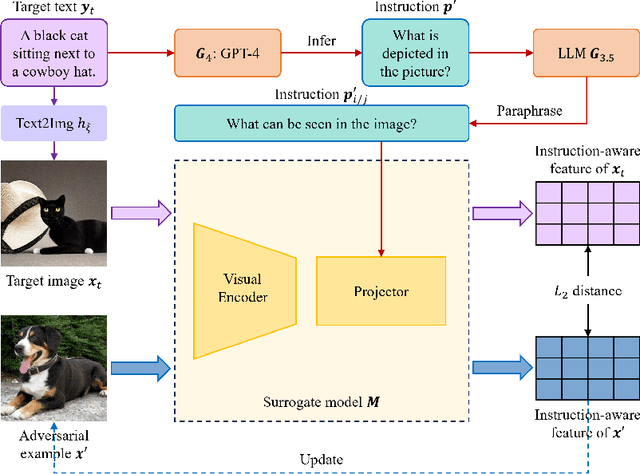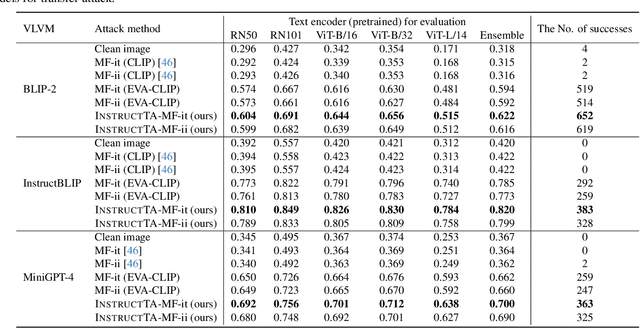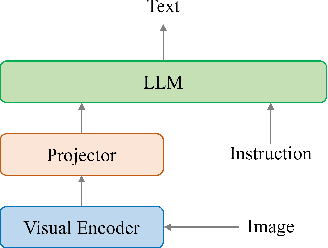Zhenlan Ji
SelfDefend: LLMs Can Defend Themselves against Jailbreaking in a Practical Manner
Jun 08, 2024Abstract:Jailbreaking is an emerging adversarial attack that bypasses the safety alignment deployed in off-the-shelf large language models (LLMs) and has evolved into four major categories: optimization-based attacks such as Greedy Coordinate Gradient (GCG), jailbreak template-based attacks such as "Do-Anything-Now", advanced indirect attacks like DrAttack, and multilingual jailbreaks. However, delivering a practical jailbreak defense is challenging because it needs to not only handle all the above jailbreak attacks but also incur negligible delay to user prompts, as well as be compatible with both open-source and closed-source LLMs. Inspired by how the traditional security concept of shadow stacks defends against memory overflow attacks, this paper introduces a generic LLM jailbreak defense framework called SelfDefend, which establishes a shadow LLM defense instance to concurrently protect the target LLM instance in the normal stack and collaborate with it for checkpoint-based access control. The effectiveness of SelfDefend builds upon our observation that existing LLMs (both target and defense LLMs) have the capability to identify harmful prompts or intentions in user queries, which we empirically validate using the commonly used GPT-3.5/4 models across all major jailbreak attacks. Our measurements show that SelfDefend enables GPT-3.5 to suppress the attack success rate (ASR) by 8.97-95.74% (average: 60%) and GPT-4 by even 36.36-100% (average: 83%), while incurring negligible effects on normal queries. To further improve the defense's robustness and minimize costs, we employ a data distillation approach to tune dedicated open-source defense models. These models outperform four SOTA defenses and match the performance of GPT-4-based SelfDefend, with significantly lower extra delays. We also empirically show that the tuned models are robust to targeted GCG and prompt injection attacks.
Testing and Understanding Erroneous Planning in LLM Agents through Synthesized User Inputs
Apr 27, 2024



Abstract:Agents based on large language models (LLMs) have demonstrated effectiveness in solving a wide range of tasks by integrating LLMs with key modules such as planning, memory, and tool usage. Increasingly, customers are adopting LLM agents across a variety of commercial applications critical to reliability, including support for mental well-being, chemical synthesis, and software development. Nevertheless, our observations and daily use of LLM agents indicate that they are prone to making erroneous plans, especially when the tasks are complex and require long-term planning. In this paper, we propose PDoctor, a novel and automated approach to testing LLM agents and understanding their erroneous planning. As the first work in this direction, we formulate the detection of erroneous planning as a constraint satisfiability problem: an LLM agent's plan is considered erroneous if its execution violates the constraints derived from the user inputs. To this end, PDoctor first defines a domain-specific language (DSL) for user queries and synthesizes varying inputs with the assistance of the Z3 constraint solver. These synthesized inputs are natural language paragraphs that specify the requirements for completing a series of tasks. Then, PDoctor derives constraints from these requirements to form a testing oracle. We evaluate PDoctor with three mainstream agent frameworks and two powerful LLMs (GPT-3.5 and GPT-4). The results show that PDoctor can effectively detect diverse errors in agent planning and provide insights and error characteristics that are valuable to both agent developers and users. We conclude by discussing potential alternative designs and directions to extend PDoctor.
InstructTA: Instruction-Tuned Targeted Attack for Large Vision-Language Models
Dec 04, 2023



Abstract:Large vision-language models (LVLMs) have demonstrated their incredible capability in image understanding and response generation. However, this rich visual interaction also makes LVLMs vulnerable to adversarial examples. In this paper, we formulate a novel and practical gray-box attack scenario that the adversary can only access the visual encoder of the victim LVLM, without the knowledge of its prompts (which are often proprietary for service providers and not publicly available) and its underlying large language model (LLM). This practical setting poses challenges to the cross-prompt and cross-model transferability of targeted adversarial attack, which aims to confuse the LVLM to output a response that is semantically similar to the attacker's chosen target text. To this end, we propose an instruction-tuned targeted attack (dubbed InstructTA) to deliver the targeted adversarial attack on LVLMs with high transferability. Initially, we utilize a public text-to-image generative model to "reverse" the target response into a target image, and employ GPT-4 to infer a reasonable instruction $\boldsymbol{p}^\prime$ from the target response. We then form a local surrogate model (sharing the same visual encoder with the victim LVLM) to extract instruction-aware features of an adversarial image example and the target image, and minimize the distance between these two features to optimize the adversarial example. To further improve the transferability, we augment the instruction $\boldsymbol{p}^\prime$ with instructions paraphrased from an LLM. Extensive experiments demonstrate the superiority of our proposed method in targeted attack performance and transferability.
Benchmarking and Explaining Large Language Model-based Code Generation: A Causality-Centric Approach
Oct 10, 2023Abstract:While code generation has been widely used in various software development scenarios, the quality of the generated code is not guaranteed. This has been a particular concern in the era of large language models (LLMs)- based code generation, where LLMs, deemed a complex and powerful black-box model, is instructed by a high-level natural language specification, namely a prompt, to generate code. Nevertheless, effectively evaluating and explaining the code generation capability of LLMs is inherently challenging, given the complexity of LLMs and the lack of transparency. Inspired by the recent progress in causality analysis and its application in software engineering, this paper launches a causality analysis-based approach to systematically analyze the causal relations between the LLM input prompts and the generated code. To handle various technical challenges in this study, we first propose a novel causal graph-based representation of the prompt and the generated code, which is established over the fine-grained, human-understandable concepts in the input prompts. The formed causal graph is then used to identify the causal relations between the prompt and the derived code. We illustrate the insights that our framework can provide by studying over 3 popular LLMs with over 12 prompt adjustment strategies. The results of these studies illustrate the potential of our technique to provide insights into LLM effectiveness, and aid end-users in understanding predictions. Additionally, we demonstrate that our approach provides actionable insights to improve the quality of the LLM-generated code by properly calibrating the prompt.
Enabling Runtime Verification of Causal Discovery Algorithms with Automated Conditional Independence Reasoning (Extended Version)
Sep 11, 2023



Abstract:Causal discovery is a powerful technique for identifying causal relationships among variables in data. It has been widely used in various applications in software engineering. Causal discovery extensively involves conditional independence (CI) tests. Hence, its output quality highly depends on the performance of CI tests, which can often be unreliable in practice. Moreover, privacy concerns arise when excessive CI tests are performed. Despite the distinct nature between unreliable and excessive CI tests, this paper identifies a unified and principled approach to addressing both of them. Generally, CI statements, the outputs of CI tests, adhere to Pearl's axioms, which are a set of well-established integrity constraints on conditional independence. Hence, we can either detect erroneous CI statements if they violate Pearl's axioms or prune excessive CI statements if they are logically entailed by Pearl's axioms. Holistically, both problems boil down to reasoning about the consistency of CI statements under Pearl's axioms (referred to as CIR problem). We propose a runtime verification tool called CICheck, designed to harden causal discovery algorithms from reliability and privacy perspectives. CICheck employs a sound and decidable encoding scheme that translates CIR into SMT problems. To solve the CIR problem efficiently, CICheck introduces a four-stage decision procedure with three lightweight optimizations that actively prove or refute consistency, and only resort to costly SMT-based reasoning when necessary. Based on the decision procedure to CIR, CICheck includes two variants: ED-CICheck and ED-CICheck, which detect erroneous CI tests (to enhance reliability) and prune excessive CI tests (to enhance privacy), respectively. [abridged due to length limit]
Causality-Aided Trade-off Analysis for Machine Learning Fairness
May 22, 2023Abstract:There has been an increasing interest in enhancing the fairness of machine learning (ML). Despite the growing number of fairness-improving methods, we lack a systematic understanding of the trade-offs among factors considered in the ML pipeline when fairness-improving methods are applied. This understanding is essential for developers to make informed decisions regarding the provision of fair ML services. Nonetheless, it is extremely difficult to analyze the trade-offs when there are multiple fairness parameters and other crucial metrics involved, coupled, and even in conflict with one another. This paper uses causality analysis as a principled method for analyzing trade-offs between fairness parameters and other crucial metrics in ML pipelines. To ractically and effectively conduct causality analysis, we propose a set of domain-specific optimizations to facilitate accurate causal discovery and a unified, novel interface for trade-off analysis based on well-established causal inference methods. We conduct a comprehensive empirical study using three real-world datasets on a collection of widelyused fairness-improving techniques. Our study obtains actionable suggestions for users and developers of fair ML. We further demonstrate the versatile usage of our approach in selecting the optimal fairness-improving method, paving the way for more ethical and socially responsible AI technologies.
 Add to Chrome
Add to Chrome Add to Firefox
Add to Firefox Add to Edge
Add to Edge